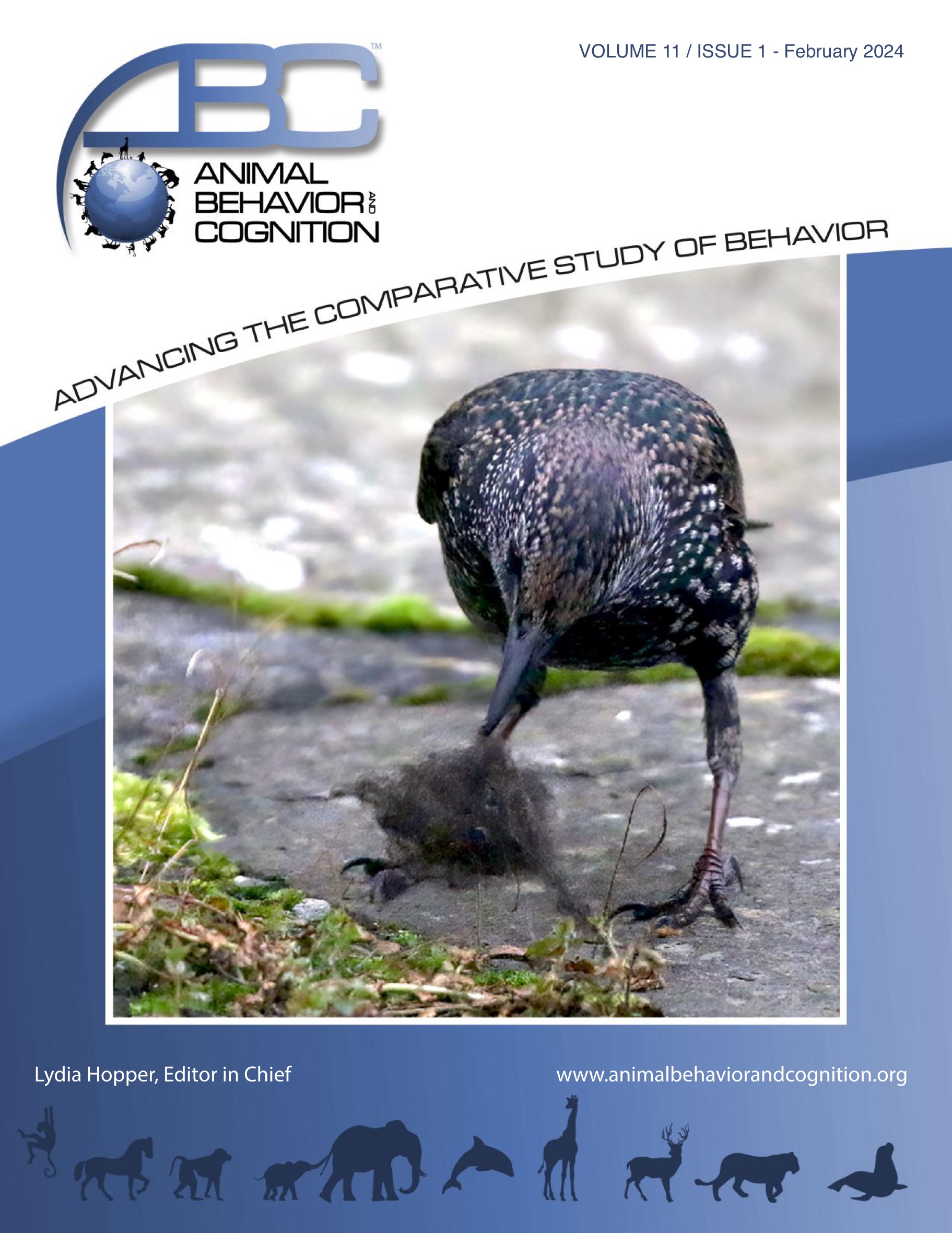Vol 11, Issue 1, February 2024
Gap Effect for Manual Responses in Chimpanzees (Pan troglodytes): Temporal Aspects of Attentional Disengagement, Cognitive aging, and the Test for Attentional Bias Toward Infant Faces
Citation
Yokoyama, M., Kawaguchi, Y., & Tomonaga, M. (2024). Gap effect for manual responses in chimpanzees (Pan troglodytes): Temporal aspects of attentional disengagement, cognitive aging, and the test for attentional bias toward infant faces. Animal Behavior and Cognition, 11(1), 24-49. https://doi.org/10.26451/abc.11.01.02.2024
Abstract
This study examined factors influencing the gap effect, a phenomenon where the saccadic latency is faster when the fixation point disappears than when it overlaps with the target. The gap effect has been used in basic attentional research, as well as in developmental, neurophysiological, and comparative research. This effect is found not only in oculomotor tasks but also in manual response tasks in humans. In this study, we conducted a gap-overlap task using manual spatially orienting responses in chimpanzees and examined several factors that influence this effect. The results confirmed the gap effect for manual orienting responses in chimpanzees. Response times for gap trials showed a floor effect at around the gap with 200 ms and more. The duration of the fixation point did not affect the gap effect, although it did affect the chimpanzees’ response times. The presence or absence of auditory stimuli at the fixation point offset did not affect the gap effect. We also analyzed the data from two geriatric individuals (51 years old) who participated in this study and confirmed the usefulness of this effect for studying comparative cognitive-aging studies. In a second task we examined attentional bias for infant faces, an effect which has been reported in humans. However, while a gap effect was observed overall, there was no significant difference in the gap effect among stimulus types.
Keywords
Chimpanzees, Gap effect, Attention, Cognitive aging, Infant face
